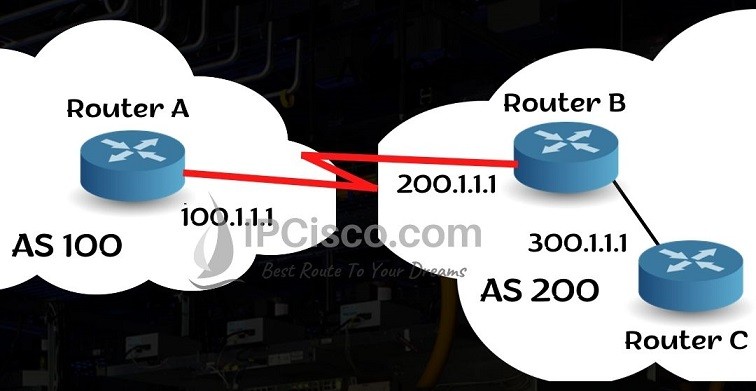- COURSES
- SPECIALS
- BLOG
- MEMBERS
- SHOP
- ABOUT
- ENROLL HERE

Neighborship establishment is important while we work with Border Gateway Protocol (BGP). To form eBGP neighborship, two nodes must be directly connected by default. But we can overcome this with BGP ebgp multi-hop command and we can use undirect connections to form eBGP neighborship.
BGP ebgp multi-hop command is used only with eBGP neighbors. For eBGP neighborship, by default we need directly connected BGP routers. But sometimes we can establish eBGP neighborship with undirect interfaces. We can do this with ebgp multi-hop command.
You can also check bgp neighbor update-source loopback and bgp next hop self commands.
If we will establish eBGP neighborship over loopback interfaces, the situation is same. When we use Loopback interfaces to form eBGP neighborship, by default, it is not possible. Because, a loopback interface is not directly connected to the remote end. It is not one hop away but two hops away from the remote site. The remote router is directly connected to the physical interface of the router and from this router to loopback interface, there is one more hop which causes two hops.
To explain this better, let’s do a configuration example with the below BGP Multi-hop topology. As you can see below, we have two Autonomous systems, AS 100 and AS 200. We will form eBGP neighborship between these autonomous systems. But we will establish this neighborship between undirect connections between Router A and Router C.
Test your Border Gateway Protocol (BGP) Knowledge with BGP Questions.
To do this, on Router A, we will configure the neighbor on remote AS and then, we will use ebgp-multihop command to say that, it is not a direct connection. We will use 2 as TTL value with ebgp-multihop command because our neighbor will be two hops away.
Router A(config)# router bgp 100
Router A(config-router)# neighbor 300.1.1.1 remote-as 200
Router A(config-router)# neighbor 300.1.1.1 ebgp-multihop 2
On router B, we will configure the neighborship to remote AS with ebgp-multihop command again.
Router B(config)# router bgp 200
Router B(config-router)# neighbor 100.1.1.1 remote-as 100
Router B(config-router)# neighbor 100.1.1.1 ebgp-multihop 2
BGP ebgp-multihop command is very important for eBGP neighborship establishment. You can use this command alone or if you will use loopback interfaces for neighborship, you can use it with bgp update-source command.
You can DOWNLOAD Cisco Packet Tracer and GNS3 Labs.


Leave a Reply